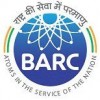FPGA Interview Questions and Answers
Updated 12 Jul 2025

Asked in Samsung

Q. What is FPGA and what are its advantages?
FPGA stands for Field Programmable Gate Array. It is a type of integrated circuit that can be programmed after manufacturing.
FPGAs offer flexibility and can be reprogrammed for different applications
They can be used to accelerate certain tasks such a...read more

Asked in TCS

Q. What is the difference between a controller and an FPGA?
Controllers are general-purpose processors used for executing software algorithms, while FPGAs are reconfigurable hardware devices used for implementing custom logic circuits.
Controllers are programmed using software, while FPGAs are configured using...read more


Q. How do you debug a design on an FPGA?
Debugging design on FPGA involves using simulation tools, logic analyzers, and oscilloscopes.
Use simulation tools to verify functionality and identify issues
Utilize logic analyzers to analyze signals and troubleshoot problems
Use oscilloscopes to visu...read more

Asked in BARC

Q. What is the main difference between CPLD and FPGA, other than the large macro cells advantage of FPGA?
CPLDs are simpler and smaller, while FPGAs are more complex and larger with more resources.
CPLDs have fewer logic blocks and are more suited for simple logic functions.
FPGAs have more logic blocks and are more suited for complex logic functions.
CPLDs...read more

Asked in TCS

Q. ASIC and FPGA abbreviations
ASIC stands for Application-Specific Integrated Circuit and FPGA stands for Field-Programmable Gate Array.
ASIC is a custom-designed chip for a specific application.
FPGA is a programmable chip that can be reconfigured for different tasks.
ASICs are mor...read more

Asked in Ansys Software Private Limited

Q. What are the differences between ASIC and FPGA?
ASICs are custom-designed for specific applications, while FPGAs are reprogrammable and more flexible.
ASICs are Application-Specific Integrated Circuits designed for a specific purpose or application.
FPGAs are Field-Programmable Gate Arrays that can ...read more

FPGA Jobs



Top Interview Questions for Related Skills



Reviews
Interviews
Salaries
Users











